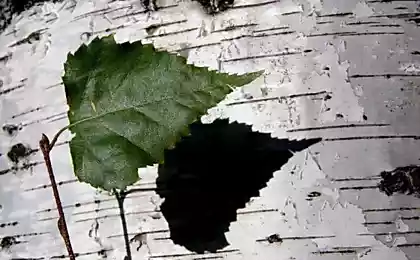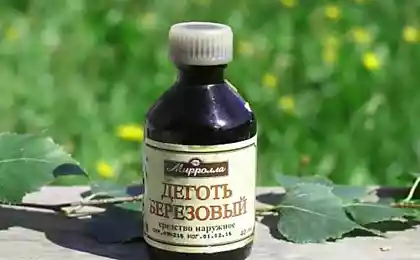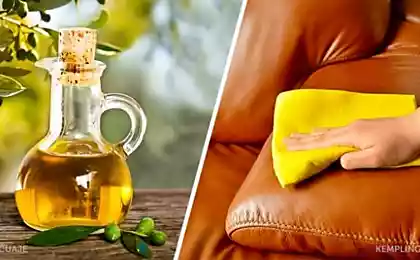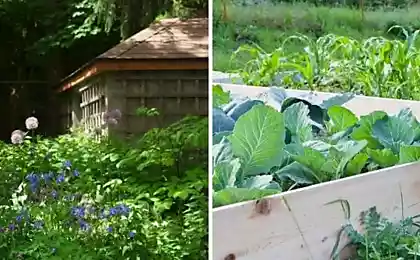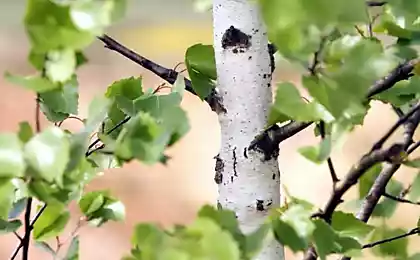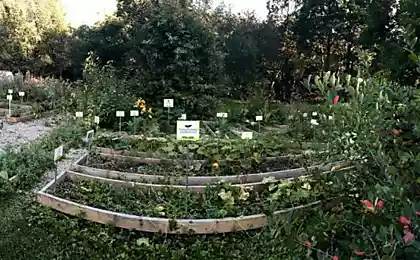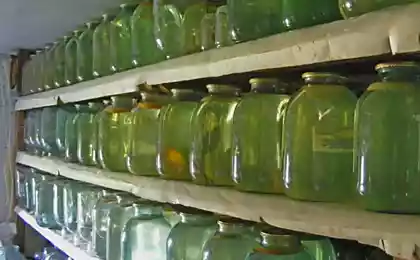177
Unusual ways of using birch tar in everyday life
Birch is a tree to which we owe many priceless gifts. Unique properties have its buds, leaves, flower earrings and even bark. From it in Russia has long been made tar, or "Russian oil". How to use birch tar in the home?
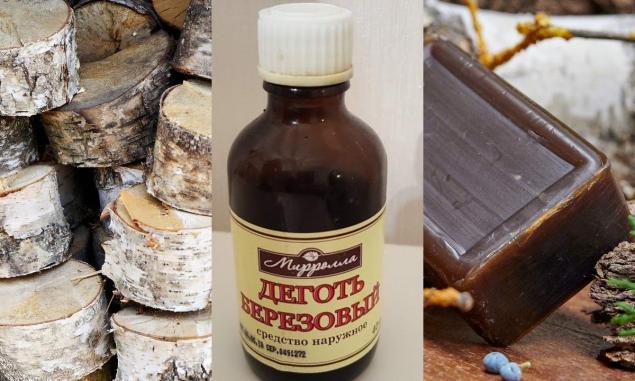
We will try to give a comprehensive answer, but to do it, admittedly, is not so easy. After all, an oily liquid with a specific smell is successfully used to protect against ticks and annoying mosquitoes, in cosmetology and medicine, in the garden and garden.
Birch and birch tar are obtained by dry distillation of wood or selected birch bark. At the same time, they are slowly heated to 200-300 degrees without oxygen. The best qualities have a bark tar.
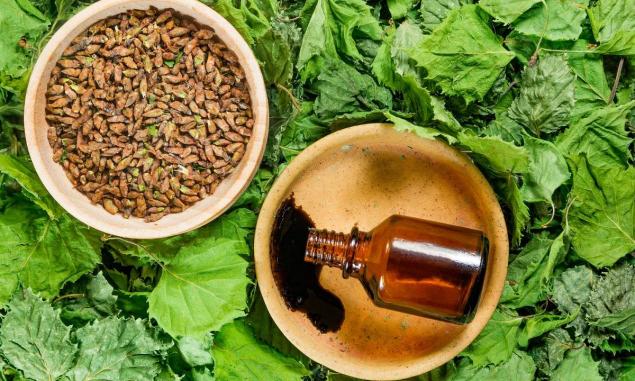
Such a variety of applications has led to the fact that tar can be bought in a variety of places: in pharmacies, hardware stores and garden goods stores. Note that birch resin is not the only material from which tar is obtained. Adhesives are also extracted from coal, shale, oil and peat.
In the household, Degot has long been used as a lubricant of moving parts, wheels. “From that cart, I sang that I had not eaten tar for a long time,” says a folk proverb. Of course, we do not encourage our readers to lubricate their cart wheels, as they did in the old days.

The wonderful liquid has more relevant applications in the household. Tar impregnated wood for waterproofing and parts of wooden houses to protect against destruction by bark beetles.
They protect leather products, impregnate shoes. The advantage of tar over other oils is that it makes the skin soft, gives it water resistance and strength.
In cosmetology, how to use birch tar in the household, we already know. Now let’s see if it should be used as a cosmetic.
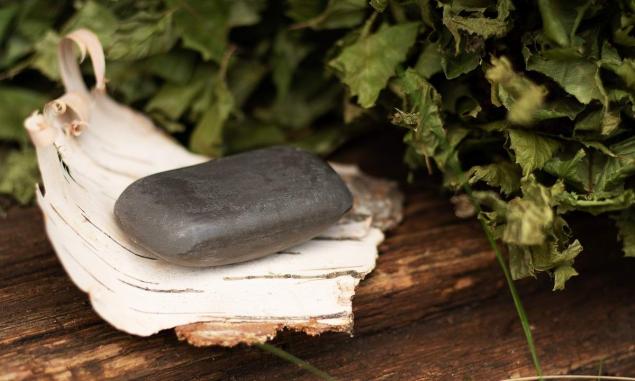
Our great-grandmothers regularly used tar soap. It contains up to 10% tar, the rest is a natural soap base. Due to the antiseptic properties of tar, such soap deeply cleanses the skin, has a wound-healing effect, helps get rid of acne, black dots, inflammation.
Birch tar helps well in hair care. Helps stop hair loss, normalizes the functioning of the sebaceous glands, relieves high fat content, helps cleanse the skin from various rashes. Shampoo with tar fights dandruff well.

You can independently prepare liquid soap with tar, useful for the skin. To do this, it is enough to take a suitable shampoo or shower gel and add a little tar (for example, 1 tenth part).
In 1927, Soviet surgeon Alexander Vasilyevich Vishnevsky invented an ointment that he used to treat ulcers and festering wounds of soldiers. The composition of the ointment is natural: birch tar, xeroform and castor oil.

Despite the fact that the ointment is considered outdated, it can be used in many cases when there is nothing better at hand or a wallet does not allow you to buy a more expensive remedy.
Various pests are the biggest headache of summer residents and gardeners in the summer season. There are a lot of substances on sale that help fight pesky insects, but all these are poisons and chemicals. And birch tar is a natural biological repellent and insecticide.
1742-1975
It has a very specific aroma, thanks to which it scares away most insects. Afraid of him and annoying, voracious Colorado beetle. To get rid of it, solve in 10 liters of water half a bar of household soap, and then add 2 tsp of tar to the soap solution.
The tar solution needs to moisten the potato leaves, as well as the soil between the rows. Potatoes can also be treated with tar before planting: just dip it in a container with a solution of tar (1 tbsp. l. per 10 l of water). The same solution water the holes to protect the tubers from the wire.
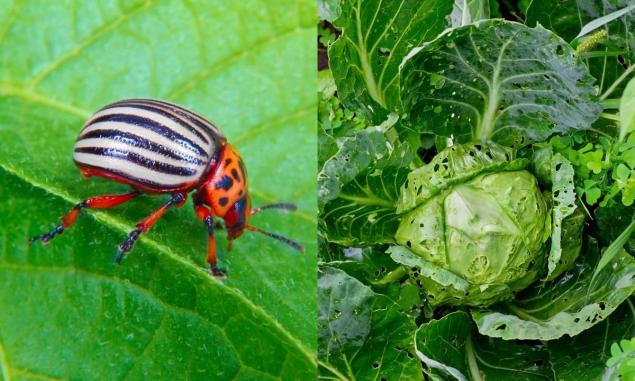
Cabbage fly, aphids, garden ants, bear and apple fertilizer - all these and many other insects are more afraid of tar than fire. And how to use it to drive pests from your site, we told in a separate article.
In the taiga villages for centuries practiced its own way of protection from midges and mosquitoes. The local population does not need chemical defenses. The most universal and effective they already have is a simple birch tar.

Tar is mixed with oil and lubricated with open areas of the skin. However, this tool can be washed off only in the bath. The solution is to dilute birch tar in alcohol in the proportion of two-thirds of tar and a third of alcohol.
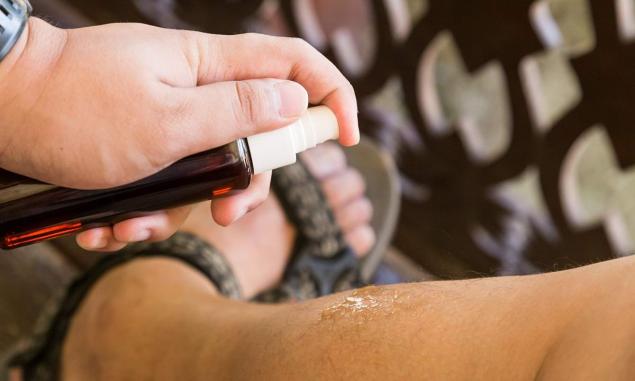
An alcoholic solution of tar works no worse than oil. It is enough to lubricate the edges of the hood and sleeves. There is another way - to set fire to a lump soaked in an alcohol solution of tar. Thick smoke with a peculiar smell will create a barrier that will protect you from insects.
To treat the skin of pets (dogs, cats, cows, rabbits), you can use tar water - tar diluted in water. After that, ticks and fleas will bypass them on the tenth road.
How to cook tar on your own? If your farm needs large volumes of tar and you are not afraid to work with your hands, you can prepare birch tar yourself.
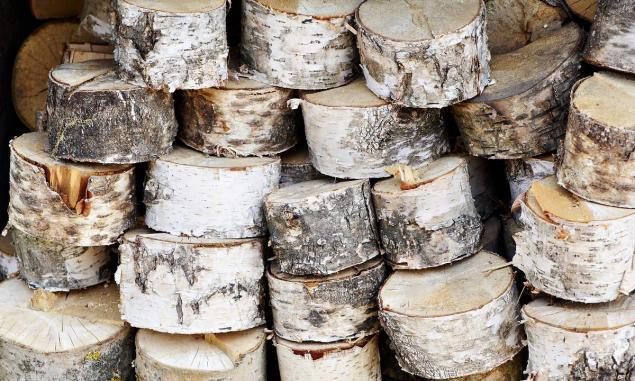
First, stock up on birch bark and two metal containers.
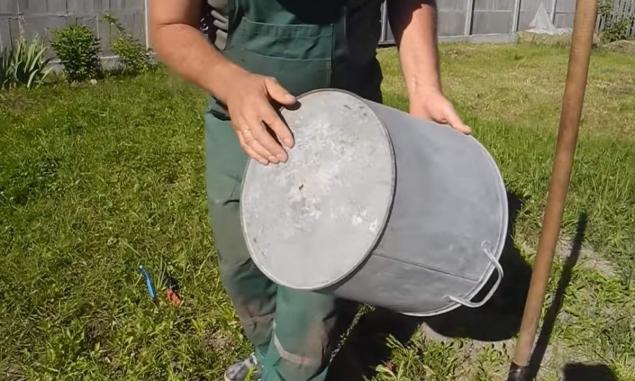
On a larger day (in our case, this is an old boiler with a lid), make a small hole.

Tightly fill it with dry birch bark and small chips, if possible seal it with a lid.
Put a smaller hole in the ground. The resulting tar will be gathered in it.
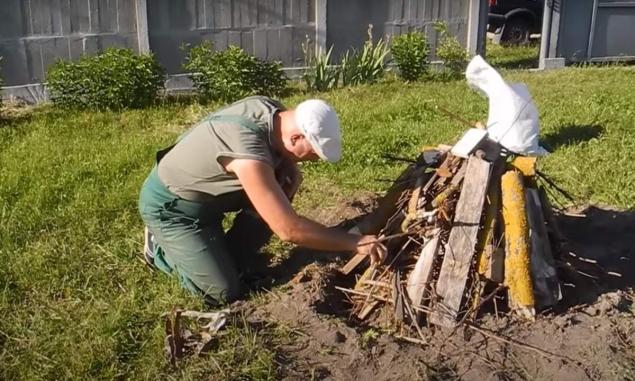
Put a large container on a small hole down (from there the tar will flow). Cover the top container with firewood and set them on fire. More details about the process can be found in the video below.
https://www.youtube.com/watch? v=mY0JYd62IB4
After 4 hours, tar will gather in the lower container. From 10 kg of birch bark it will turn out about 3 kg.

We will try to give a comprehensive answer, but to do it, admittedly, is not so easy. After all, an oily liquid with a specific smell is successfully used to protect against ticks and annoying mosquitoes, in cosmetology and medicine, in the garden and garden.
Birch and birch tar are obtained by dry distillation of wood or selected birch bark. At the same time, they are slowly heated to 200-300 degrees without oxygen. The best qualities have a bark tar.

Such a variety of applications has led to the fact that tar can be bought in a variety of places: in pharmacies, hardware stores and garden goods stores. Note that birch resin is not the only material from which tar is obtained. Adhesives are also extracted from coal, shale, oil and peat.
In the household, Degot has long been used as a lubricant of moving parts, wheels. “From that cart, I sang that I had not eaten tar for a long time,” says a folk proverb. Of course, we do not encourage our readers to lubricate their cart wheels, as they did in the old days.

The wonderful liquid has more relevant applications in the household. Tar impregnated wood for waterproofing and parts of wooden houses to protect against destruction by bark beetles.
They protect leather products, impregnate shoes. The advantage of tar over other oils is that it makes the skin soft, gives it water resistance and strength.
In cosmetology, how to use birch tar in the household, we already know. Now let’s see if it should be used as a cosmetic.

Our great-grandmothers regularly used tar soap. It contains up to 10% tar, the rest is a natural soap base. Due to the antiseptic properties of tar, such soap deeply cleanses the skin, has a wound-healing effect, helps get rid of acne, black dots, inflammation.
Birch tar helps well in hair care. Helps stop hair loss, normalizes the functioning of the sebaceous glands, relieves high fat content, helps cleanse the skin from various rashes. Shampoo with tar fights dandruff well.

You can independently prepare liquid soap with tar, useful for the skin. To do this, it is enough to take a suitable shampoo or shower gel and add a little tar (for example, 1 tenth part).
In 1927, Soviet surgeon Alexander Vasilyevich Vishnevsky invented an ointment that he used to treat ulcers and festering wounds of soldiers. The composition of the ointment is natural: birch tar, xeroform and castor oil.

Despite the fact that the ointment is considered outdated, it can be used in many cases when there is nothing better at hand or a wallet does not allow you to buy a more expensive remedy.
Various pests are the biggest headache of summer residents and gardeners in the summer season. There are a lot of substances on sale that help fight pesky insects, but all these are poisons and chemicals. And birch tar is a natural biological repellent and insecticide.
1742-1975
It has a very specific aroma, thanks to which it scares away most insects. Afraid of him and annoying, voracious Colorado beetle. To get rid of it, solve in 10 liters of water half a bar of household soap, and then add 2 tsp of tar to the soap solution.
The tar solution needs to moisten the potato leaves, as well as the soil between the rows. Potatoes can also be treated with tar before planting: just dip it in a container with a solution of tar (1 tbsp. l. per 10 l of water). The same solution water the holes to protect the tubers from the wire.

Cabbage fly, aphids, garden ants, bear and apple fertilizer - all these and many other insects are more afraid of tar than fire. And how to use it to drive pests from your site, we told in a separate article.
In the taiga villages for centuries practiced its own way of protection from midges and mosquitoes. The local population does not need chemical defenses. The most universal and effective they already have is a simple birch tar.

Tar is mixed with oil and lubricated with open areas of the skin. However, this tool can be washed off only in the bath. The solution is to dilute birch tar in alcohol in the proportion of two-thirds of tar and a third of alcohol.

An alcoholic solution of tar works no worse than oil. It is enough to lubricate the edges of the hood and sleeves. There is another way - to set fire to a lump soaked in an alcohol solution of tar. Thick smoke with a peculiar smell will create a barrier that will protect you from insects.
To treat the skin of pets (dogs, cats, cows, rabbits), you can use tar water - tar diluted in water. After that, ticks and fleas will bypass them on the tenth road.
How to cook tar on your own? If your farm needs large volumes of tar and you are not afraid to work with your hands, you can prepare birch tar yourself.

First, stock up on birch bark and two metal containers.

On a larger day (in our case, this is an old boiler with a lid), make a small hole.

Tightly fill it with dry birch bark and small chips, if possible seal it with a lid.
Put a smaller hole in the ground. The resulting tar will be gathered in it.

Put a large container on a small hole down (from there the tar will flow). Cover the top container with firewood and set them on fire. More details about the process can be found in the video below.
https://www.youtube.com/watch? v=mY0JYd62IB4
After 4 hours, tar will gather in the lower container. From 10 kg of birch bark it will turn out about 3 kg.

